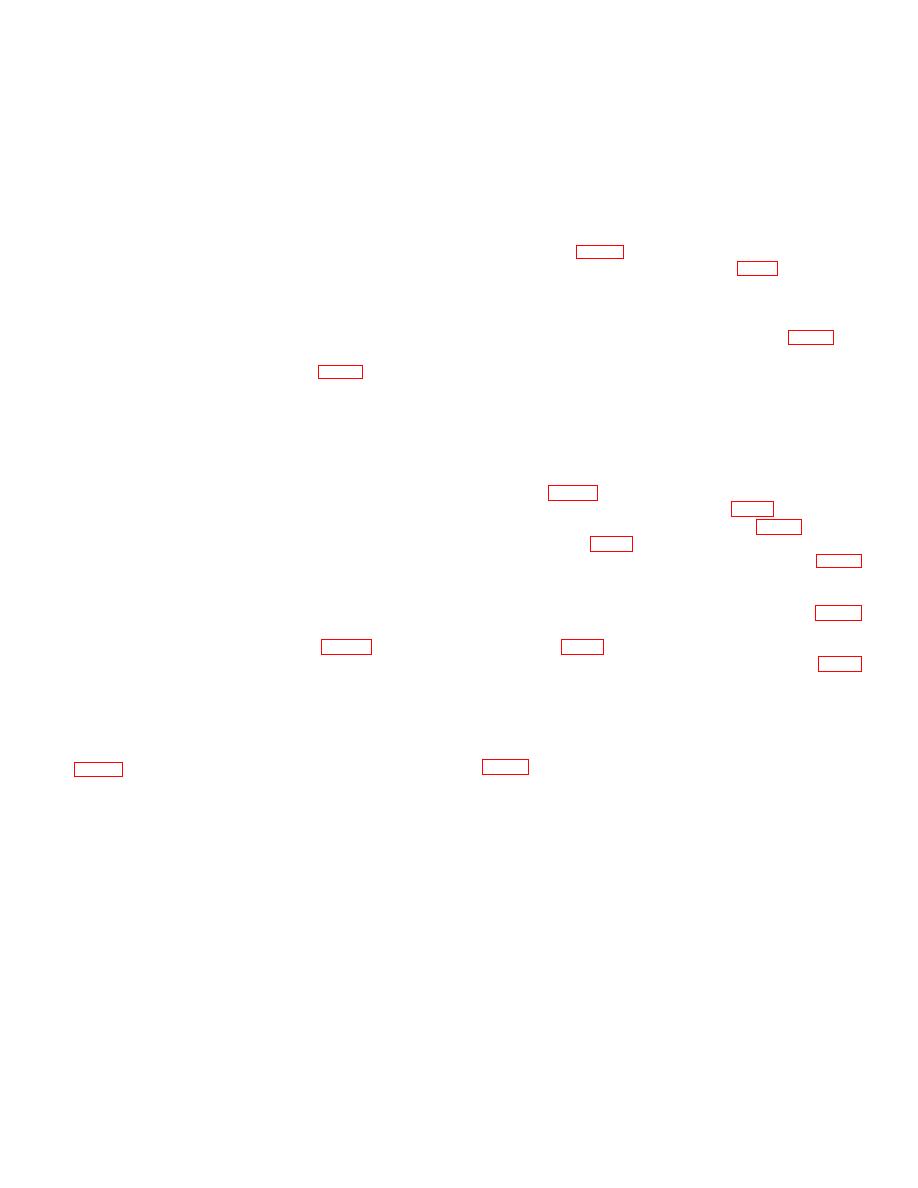 |
|||
|
|
|||
|
Page Title:
Alternate Method of Charging From Commercial Air Cylinder |
|
||
| ||||||||||
|
|
 f. Charging.
(1) Close the filling line valves (3). Observe the
pressure indicated on each gage (1).
(1) Close both filling line valves (3).
With chalk, mark the pressure on each cylinder.
(2) Open the air cylinder valves (2).
(2) Close the valves on the cylinder.
(3) Determine from the pressure gages (1) which
(3) Open the filling line valves.
cylinder has the lower pressure.
(4) Bleed all rubber hoses. Disconnect the bleeder
Open the filling line valve (3) at the gage that shows the
valve assemblies from the check valves.
lower pressure. Fill the pressure tanks to the pressure
Replace the threaded caps on the check valves (7);
shown on the gage. Close the filhng line valve. Open
wrench tighten the caps.
the other filling line valve and fill the pressure tanks until
(5) Disconnect the filling lines from the cylinder
they reach at least 1,700 psi pressure.
adapters (19, fig. 2). Use two wrenches and take care
(4) When the pressure tanks are filled, close the
not to twist or kink the metal hose (4, fig. 8). Support the
filling line valves (3). Open the bleeder valves (6) on the
lines during the operation so that their full weight does
rubber hoses (5). Remove the hose fittings from the
not hang on the metal hose.
check valves (7). Screw the threaded caps onto the
(6) Remove cylinder adapters from cylinders.
check valves; wrench- tighten the caps.
g. Attaching Two Filling Lines to Four Commercial
(7) Replace the safety plug assembly (25, fig. 2).
Air Cylinders. If many pressure tanks must be charged,
(8) Replace the commercial air cylinder protection
cap.
combine the filling line assemblies (27), fig. 2) in two or
more kits for more efficient charging. An additional metal
8. Alternate Method of Charging From Commercial
hose is provided in each kit for connecting two filling line
Air Cylinder
assemblies.
When connecting two filling line
The following method can be used to charge one M2A1-
assemblies, remove one pipe plug from each assembly
7 flamethrower pressure tank, when it is removed frbm
and screw the metal hose into the openings. The
the flamethrower or riot control agent disperser:
procedure for charging is similar to the one used for two
a. Attach the filling line assembly to commercial air
cylinders (d above).
cylinders (para 7d(1) through (5)).
Air is taken first from the cylinder with the lowest
b. Cap the unused safety plug (9, fig. 9) of the filling
pressure and last from the cylinder with the highest
line assembly. Screw a tube reducer (7, fig. 3) into the
pressure.
tube reducer (3, fig. 9).
h. Proper Pressure. Insure that the air delivered to
c. Connect the bleeder valve assembly (35, fig. 2)
the flamethrower pressure tank is at a minimum of 1,700
of the 6-foot rubber hose (4) to the tube reducer (3). Be
psi pressure; 2,000 psi pressure is recommended.
sure that the bleeder valve is closed.
CAUTION
d. Unscrew the charging line adapter (33, fig. 2)
Do not overtighten the packing nut
from the other end of the rubber hose and screw a tube
reducer (9), fig. 3) into the hose.
on the filling line valve (3, fig. 8).
e. Screw a quick-disconnect coupling half (7, fig. 9)
Over- tightening can damage the
into the tube reducer (8).
packing and mating threads and
f. Attach the quick-disconnect coupling half to the
cause the valve to jam.
male quick-disconnect half on the M2A1-7 flamethrower
(1) If a filling-line valve leaks, wrench- tighten the
pressure tank.
packing nut.
g. Unscrew the metal cap from the check valve (7,
(2) When the highest pressure shown on the gage
(1, fig. 8) is less than 1,700 psi, close both cylinder
check valve with water or saliva. (Moisture prevents
valves (2) and bleed the pressure from the rubber hose
damage
to
the
rubber
wash-
by opening the bleeder valve. Close the filling line valves
(3). Remove the cylinder having the lowest pressure and
replace it with a fully charged cylinder to complete the
charging operation.
With chalk, mark the lowest
pressure on the removed cylinder.
i. After-Charging Procedure. When charging is
completed, proceed as follows:
13
|
|
Privacy Statement - Press Release - Copyright Information. - Contact Us |